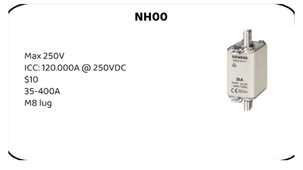So I am new to this group, couple questions
people keep mentioning that you need for 20k AIC for LIFEp04. Where are people getting this amp rating from, I have seen no links or white papers showing this kind of amperage from normal cells, Most of my reading indicates normal cells in 12/24/48 series configurations are only capable of around 1000A dead short. Parallel strings would all have independent fuses. Most rack enclosures packs, are using a 6k to 10k CHNT AIC breaker such as the eg4 rack battery
Does anyone have some kind of technical document explaining this 20,000 amp rating?
People also keep mentioning T fuses as the savior here, not the enclosure. All my other reading indicates T Fuses by themselves are NOT ignition protected. The link below also indicates that (the enclosure needs to be ignition protected). I see a multitude of photos of bare T Fuses just sitting on bus bars..
Comments from this post also indicate blue sea and Bussmann did not have this tested back in 2020.
I am looking for a wiring schematic showing cable gauges for the following set up.... 100Ah 12v LiFePO4 Battery (Hitch mounted on my TT). 2200W Pure Sine Wave Inverter (Mounted inside TT as close to Battery as possible to keep voltage drop < 0.25v?). ANL Fuse 250A? Connect to the Battery +ve...

diysolarforum.com
"
NOTE: Class T fuses do not have an ignition protection rating. As near as I can tell, from speaking with Blue Sea Systems, as well as Cooper Bussmann, they have not been specifically tested for this. This only means that they’ve not been tested, not that they would necessarily be unsafe."








